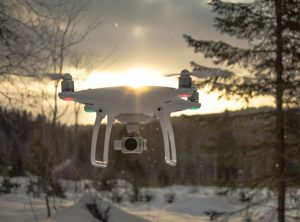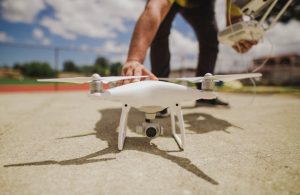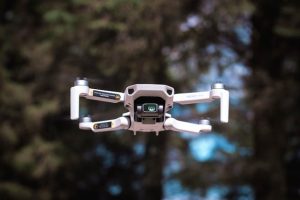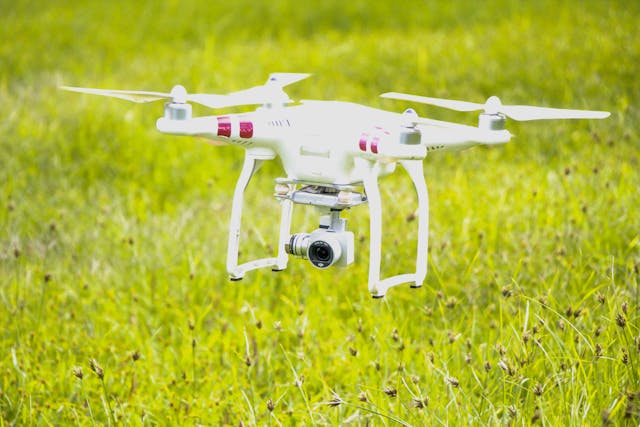Research and Expertise
I have been a staff covering games and hobbies for Wirecutter since 2022, with a specific focus on drones. With an FAA Part 107 license, I have tested over a dozen drones in various locations, from model-airplane fields in New York City to national forests in Colorado. My research includes reading drone forums, analyzing numerous reviews, and engaging with experienced drone pilots to understand what users seek in the best drones.
Wirecutter’s editorial standards ensure I review and test products with complete independence and without any conflict of interest. I hold no financial interests in the companies I cover, ensuring unbiased and reliable recommendations.
Who This Guide is For
This guide is for hobbyists and professionals interested in capturing stunning aerial photos and videos. Drones offer unique perspectives that traditional cameras can’t easily achieve. They are valuable tools for tasks like filming weddings, inspecting properties, and creating captivating landscape videos.
Professionals in the film industry might need high-end models that support specific camera mounts, while those in agriculture or industrial inspection could require drones equipped with specialized sensors.
How We Picked and Tested the Best Drones

Selection Criteria
After analyzing professional and user reviews, and consulting with experts, we identified key criteria for selecting the best drones:
- Quadcopter Design: Drones with a quadcopter or hexacopter design offer maximum stability for photo and video capture.
- Crash-Avoidance Sensors: Essential for new flyers, these sensors detect and avoid obstacles, ensuring safety and ease of use.
- High-Quality Camera: We focused on drones offering at least 12-megapixel photos and smooth 4K video.
- Three-Axis Gimbal: A three-axis gimbal ensures stable footage, even in windy conditions or jerky movements.
- Long Battery Life: Drones with batteries lasting at least 30 minutes provide ample shooting time and flexibility.
- Autonomous Modes: Features like return-home mode and cinematic flight modes are essential for effortless, complex shots.
- Portability: The best drones are compact enough to fit into a backpack or camera bag for easy transportation.
- Long Flight Range: Although federal rules require keeping drones within line of sight, an extended range can be useful in special situations.
- Intuitive Controller: Controllers should have easy-to-use joysticks, buttons, and smartphone integration for live feed viewing and accessing smart flight modes.
Testing Process
We rigorously tested each drone by capturing photos and videos, evaluating stabilization capabilities, and checking for propeller intrusion in shots. We also tested all intelligent flight modes and crash-avoidance systems in challenging environments. Additionally, we assessed drone performance in various weather conditions to identify any strengths or weaknesses.
Top Pick: DJI Air 3

Features and Performance
The DJI Air 3 is the best drone for budding aerial photographers and videographers due to its automated obstacle avoidance, high-quality cameras, and ease of use. Despite its lower price compared to the DJI Mavic 3 Pro, the Air 3 offers impressive capabilities.
- Obstacle Avoidance: The Air 3 features 360-degree obstacle detection, making it nearly impossible to crash. This feature significantly reduces stress, especially for new flyers.
- Camera Quality: The main camera has a 1/1.3-inch sensor and an f/1.7 aperture, capturing sharp, well-stabilized 4K video at up to 100 frames per second, and 20-megapixel stills. The secondary 70mm-equivalent telephoto camera adds shooting flexibility.
- Stability in Windy Conditions: The Air 3 remains stable in winds up to 14 mph, delivering steady videos even in challenging conditions.
- Battery Life: With a battery life of up to 46 minutes, the Air 3 allows ample time to capture extensive footage before requiring a battery swap.
- Autonomous Flight Modes: The drone includes multiple intelligent flight modes like ActiveTrack and QuickShots, which automate cinematic shots, enhancing creative possibilities.
- Portability: Measuring 8 by 3.5 by 3.25 inches when folded and weighing 1.5 pounds, the DJI Air 3 is compact and lightweight, making it easily transportable.
- Controller and Software: The DJI Fly app on the RC 2 controller provides robust functionalities, including drone calibration, camera settings, GPS maps, and intelligent flight modes.
Flaws but Not Dealbreakers
While highly capable, the Air 3 has a smaller camera sensor than the Mavic 3 Pro and Air 2S, limiting its low-light capabilities slightly. Additionally, the drone’s 8 GB internal storage can be quickly exhausted at high resolutions, making extra microSD cards a necessity.
Upgrade Pick: DJI Mavic 3 Pro
Enhanced Features
The DJI Mavic 3 Pro is a premium choice for those seeking superior image quality and advanced features.
- Camera System: It features a large Four Thirds sensor with a Hasselblad-branded wide-angle lens, capable of shooting 5.1K video at 50 frames per second. Two additional telephoto lenses provide further versatility.
- Obstacle Avoidance: Omnidirectional sensors allow it to navigate obstacles seamlessly.
- Battery Life and Range: With a 43-minute battery life, the Mavic 3 Pro supports longer flying and shooting sessions. It can fly up to 17.3 miles away, though keeping it within line of sight is required by law.
- Portability: Weighing 2 pounds, the Mavic 3 Pro remains easy to carry despite being slightly larger than the Air 3.
Limitations
The Mavic 3 Pro is significantly more expensive and may be overkill for casual users. However, for professionals seeking the best drone for high-quality photos and videos, it is a worthwhile investment.
Budget Pick: DJI Mini 3

Affordable Entry-Level Option
The DJI Mini 3 is an excellent entry-level drone that offers solid performance at a reasonable price.
- Ease of Use: With automatic takeoff, landing, and return-home features, the Mini 3 is user-friendly for beginners.
- Camera Quality: The drone’s 1/1.3-inch sensor captures 48-megapixel photos and 4K video at 30 frames per second. It also supports vertical video, ideal for social media.
- Portability: Weighing less than 250 grams, it does not require FAA registration for personal use and is easily portable.
- Battery Life: The Mini 3 offers up to 38 minutes of flight time with its standard battery, extendable to 51 minutes with the Intelligent Flight Battery Plus.
- Performance: While lacking obstacle avoidance features, it provides good enough range and quality for casual and beginner use.
Considerations
The Mini 3 may struggle in low light or challenging conditions but remains a fantastic option for those looking for an affordable, starter drone.
Best for Thrill Seekers: DJI Avata 2
First-Person View (FPV) Experience
The DJI Avata 2 is perfect for those seeking a thrilling FPV flying experience.
- FPV Capabilities: The Avata 2 offers an immersive flying experience with its single-axis gimbal and agile control.
- Build Quality: Built to withstand impacts, the Avata 2 is durable for intense use.
- Camera Quality: Equipped with a 1/1.3-inch sensor, it captures high-quality footage with a super-wide lens.
- Flight Modes: Includes “easy acro” maneuvers like flips and rolls for added excitement.
Downsides
The Avata 2 lacks the obstacle avoidance sensors found in other models, which could challenge inexperienced pilots. However, its sturdy build compensates for occasional crashes, making it suitable for adventurous flying.
Alternative: Autel Robotics Evo Lite+
Another Solid Option
The Autel Robotics Evo Lite+ is a noteworthy alternative to DJI drones, offering robust features and 6K camera capabilities.
- Camera Quality: It features a 20-megapixel camera with a 1-inch sensor, capable of shooting 6K video.
- Battery Life: With up to 40 minutes of flight time, it is a reliable choice for extended shooting.
- Ease of Use: The Autel Sky app includes various autonomous flight modes and is available on both iOS and Android.
Drawbacks
While the Evo Lite+ is a strong performer, it doesn’t quite match DJI’s models in image clarity and color quality. Its anti-collision sensors cover fewer directions, requiring pilots to be extra cautious.
Security and Privacy Notes on DJI Drones
DJI drones have faced scrutiny regarding security concerns, including the necessity for Android users to download the DJI Fly app outside the Google Play store. DJI asserts it does not sell user data but suggests potential data sharing with third parties. Users should weigh the benefits of features like geofencing and photo access against potential privacy concerns.
Conclusion
Choosing the best drone depends on your specific needs and budget. For aspiring aerial photographers and videographers, the DJI Air 3 offers excellent value with robust features. For professionals seeking top-notch image quality, the DJI Mavic 3 Pro is the ideal choice. For beginners, the DJI Mini 3 provides an affordable, capable option, while thrill-seekers will enjoy the DJI Avata 2’s FPV experience. Finally, the Autel Robotics Evo Lite+ offers a solid alternative for those looking beyond DJI options.




